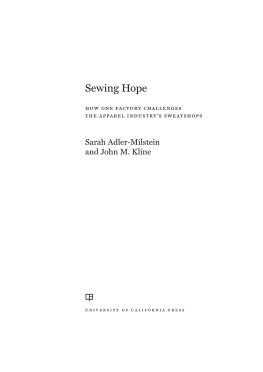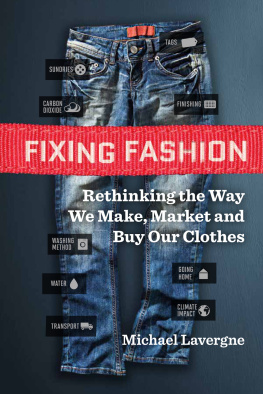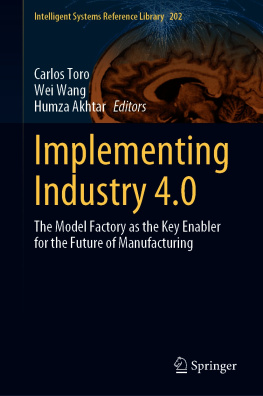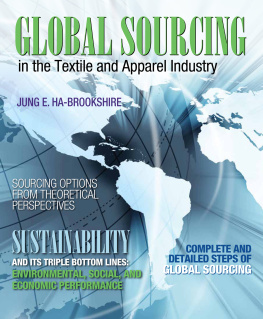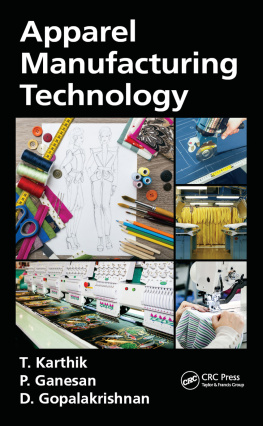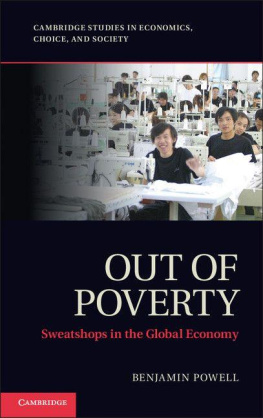Preface
Apparel products are ever-present in our livesbought, worn, changed, and discardedwith thought seldom given to the individuals who make them. Headlines sometimes report on factory fires or other tragedies that claim workers lives, but the apparel industrys global span, locating most production in regions and countries with low wages far from major consumer markets, makes it easy to avoid unpleasant stories about unsafe conditions and daily worker abuse in so-called sweatshops. But this is a different storyone of hope in an industry historically marked by exploitation and one about the purposeful creation of a new type of factory: a kind of anti-sweatshop.
Alta Gracia was born out of an unlikely alliance between a couple of apparel industry insiders, workers, and labor advocates. To make Alta Gracia successful, each group had to step out of their normal roles. As a result, they turned the apparel industrys business model on its head, creating the first successful anti-sweatshop in the global South dedicated to Changing Lives One Shirt at a Time. The new model transformed the traditionally invisible workers who make clothes into celebrity spokespeople, inspiring audiences across the United States with their stories. Factory managers usually tasked with the industrys dirty work became deeply involved community memberspeople willing to take a courageous stand against opportunistic loan sharks.
This book goes inside the small community of Villa Altagracia in the Dominican Republic, Alta Gracias namesake and home. Here, we visit workers, hearing how they maintained hope while working at exploitative apparel jobsand how some of their dreams are now being realized through the impact of Alta Gracias living wage, or salario digno. While the story itself is true, a few names have been changed for reasons of personal privacy or to protect individuals who might still be at risk of facing retribution for taking a stand.
The coauthorsan unlikely tag team of Sarah Adler-Milstein, a labor rights advocate, and John Kline, an international relations and business ethics professorserve as guides.
Sarahs ties to Villa Altagracia began with doing research in the town before Alta Gracia existed. She then became involved in getting Alta Gracia off the ground, and eventually served as the labor rights monitor for the factory and helping Alta Gracia achieve ongoing compliance with its groundbreaking standards. She also worked with public health researchers to document the health impacts of Alta Gracias living-wage and employment model.
Johns ties to Alta Gracia stem from his teaching and research on business ethics at Georgetown Universitys School of Foreign Service. He achieved early agreement on access to all key parties to independently document and assess the reasons for Alta Gracias success or failure. His research covers both the business model and the factorys impact on workers and their families.
Throughout the book, workers stories provide a rare look at what happens inside the factories that make our clothesand what happens when those factories close and move on to the next country with even cheaper labor costs. Interviews with Alta Gracia workers provide insights into what a salario digno really means: from a life-saving operation to families reunited; first-ever bank loans to indoor plumbing; children with school uniforms to adults enrolling in night classes.
Beyond interviews, an analysis of Alta Gracias business plan reveals the challenges a start-up factory like Alta Gracia faced just to compete in an industry known for subpoverty wages and cutting corners. Major readjustments following the factorys separation from its founding parent company required a reconfiguration of supply and distribution channels as well as new approaches to product and marketing. The business analysis for Alta Gracia sheds light on what is possible for industry transformation more broadly.
Chapter 1 sets the stage by looking at the broader context for Alta Gracia in the apparel industry as a whole. It covers the kinds of dangers that accompany the race to the bottom, as well as the thinking that underlines many arguments for the continued existence of sweatshops. It also introduces Alta Gracia and looks at the example it sets, particularly for existing apparel brands outsourcing labor to the global South.
Chapter 2 takes readers to Villa Altagracia before Alta Gracia was established. Readers go inside BJ&B, a hat factory producing for brands including Nike, Reebok, and Adidas, and for universities in the United States, and its workers attempts to organize. It also looks at how, when workers were fired for speaking out on abusive treatment, they were able to work with U.S. labor advocates and United Students Against Sweatshops (USAS) to win reinstatement and ensure their legal rights. Later, as attention faded and brands shifted orders elsewhere, BJ&B was forced to close its doors. With high rates of unemployment, residents of Villa Altagracia faced growing indebtedness, familial strains, and health problems that drained away hope for improvement.
Chapter 3 tells how a corporate CEO and a labor organization executive reached a historic agreement to create a living-wage apparel factoryand some of their initial challenges. The chapter also looks at how an applied definition for a living wage as the basis for worker pay was ultimately calculated, and how Alta Gracia incorporated an even broader concept of salario digno, a wage with dignity, that recognizes labor rights and respect for workers as partners in the production process.

